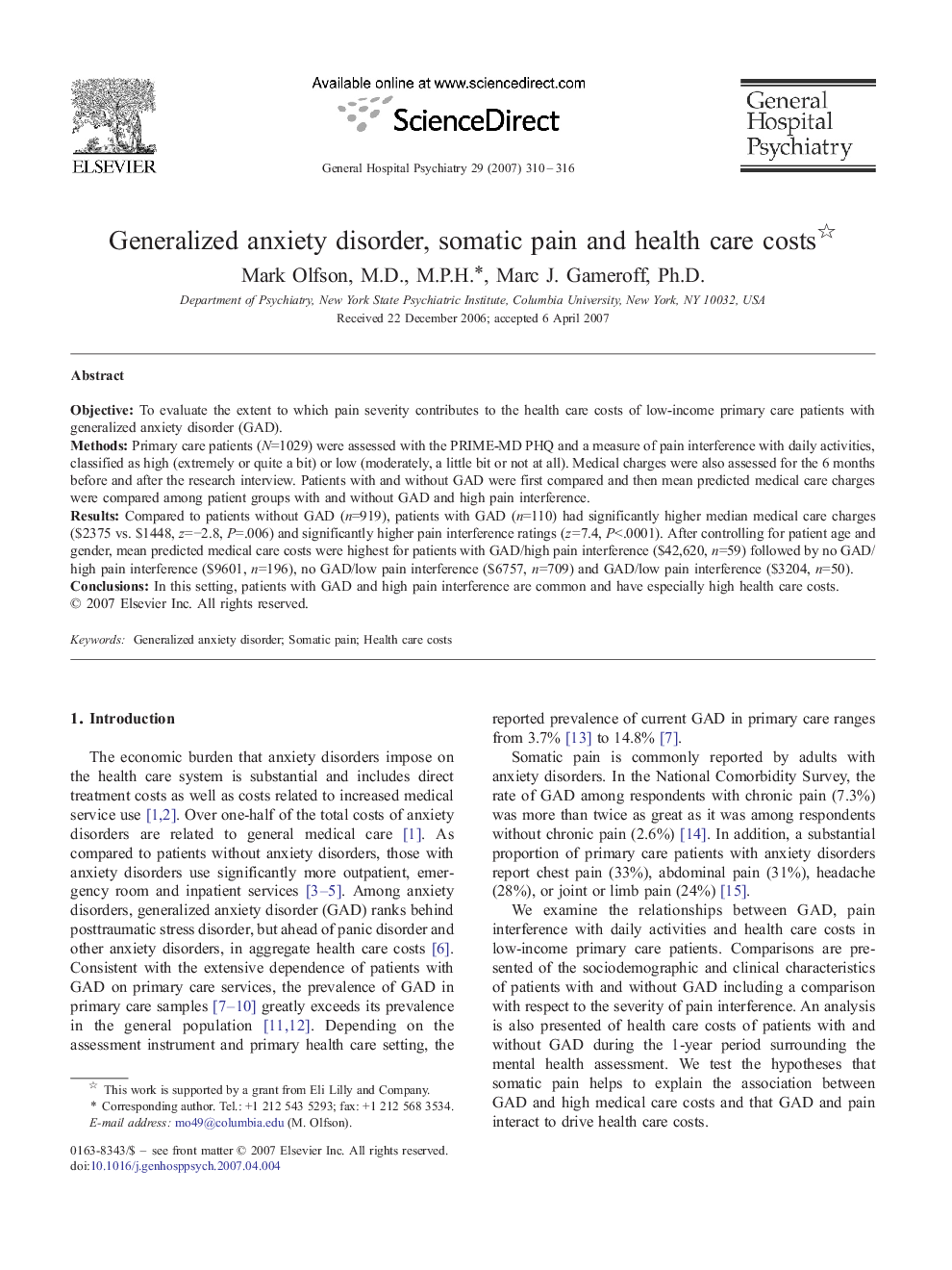| Article ID | Journal | Published Year | Pages | File Type |
|---|---|---|---|---|
| 3238362 | General Hospital Psychiatry | 2007 | 7 Pages |
ObjectiveTo evaluate the extent to which pain severity contributes to the health care costs of low-income primary care patients with generalized anxiety disorder (GAD).MethodsPrimary care patients (N=1029) were assessed with the PRIME-MD PHQ and a measure of pain interference with daily activities, classified as high (extremely or quite a bit) or low (moderately, a little bit or not at all). Medical charges were also assessed for the 6 months before and after the research interview. Patients with and without GAD were first compared and then mean predicted medical care charges were compared among patient groups with and without GAD and high pain interference.ResultsCompared to patients without GAD (n=919), patients with GAD (n=110) had significantly higher median medical care charges ($2375 vs. $1448, z=−2.8, P=.006) and significantly higher pain interference ratings (z=7.4, P<.0001). After controlling for patient age and gender, mean predicted medical care costs were highest for patients with GAD/high pain interference ($42,620, n=59) followed by no GAD/high pain interference ($9601, n=196), no GAD/low pain interference ($6757, n=709) and GAD/low pain interference ($3204, n=50).ConclusionsIn this setting, patients with GAD and high pain interference are common and have especially high health care costs.
